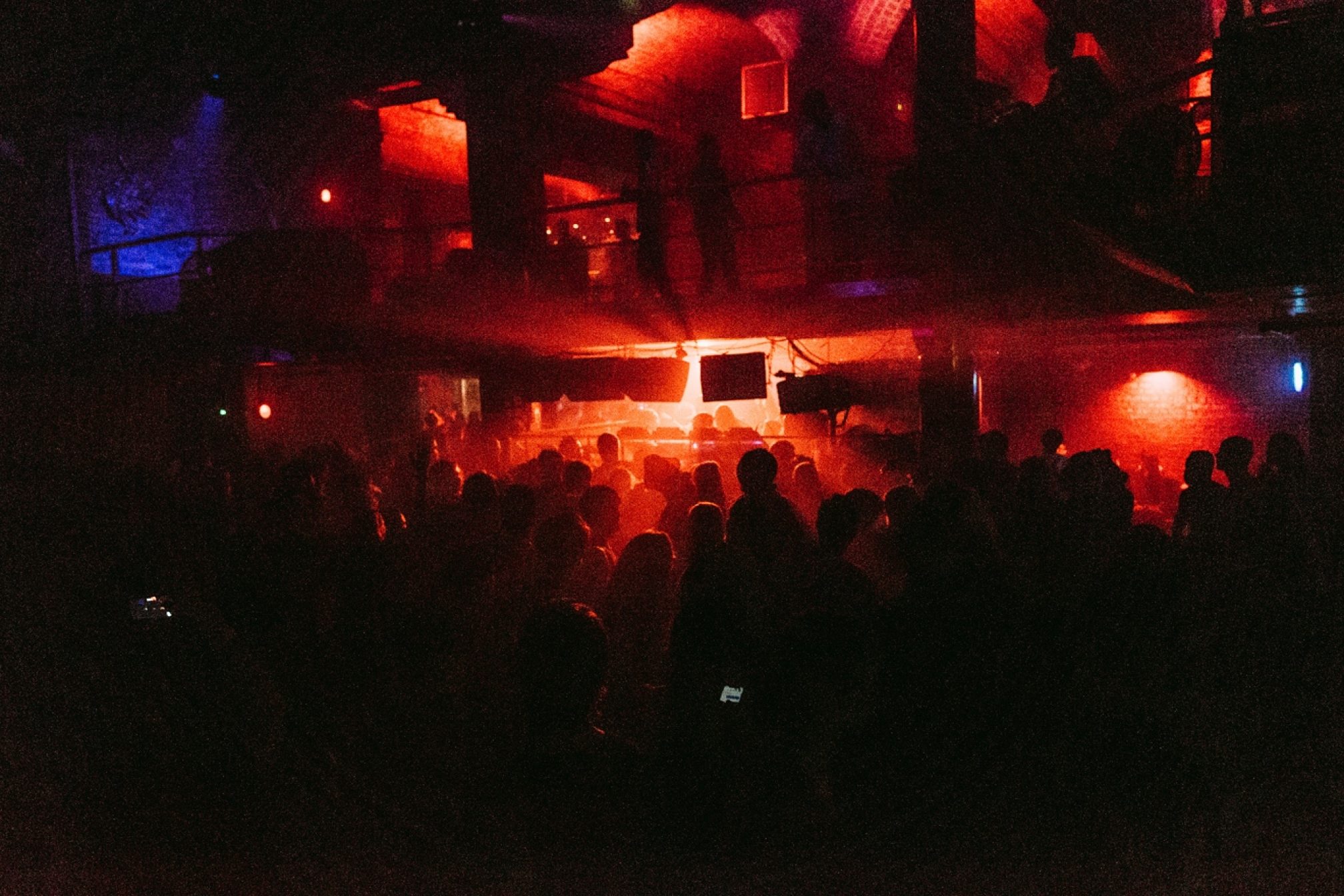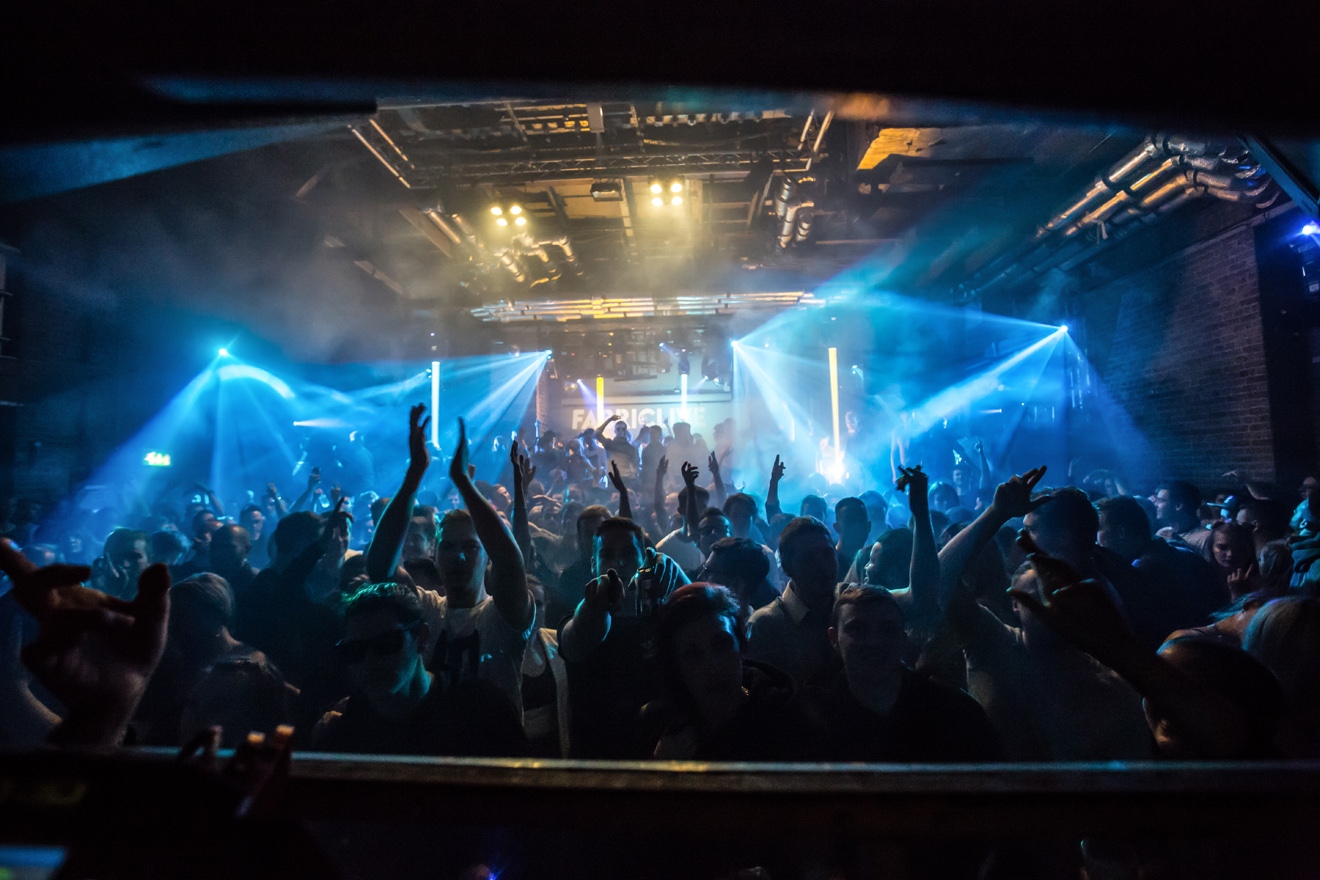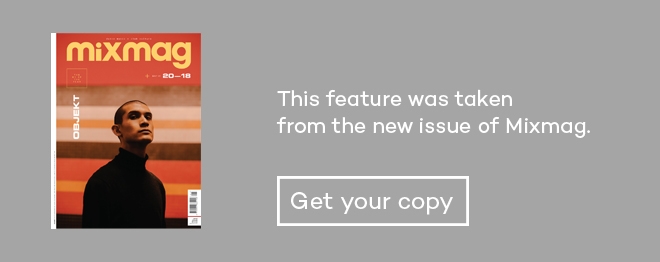 Scene reports
Scene reports
Fabric 19: The mood abides at London's clubbing institution
Two years on from its near closure, we investigate Fabric's recovery
Alan D Miller, the charismatic chairman of the Night Time Industry Association (NTIA), describes Fabric’s reopening in brutally honest fashion: “We should celebrate that they’re open but we should all recognise the load they are having to carry to continue. A lot of people in business would just go “No, fuck that, it’s too difficult. You’re taking the piss”. It’s almost like when people keep congratulating you after open heart surgery. It’s good that you didn’t die, but now you’ve got all these things imposed”.
Two years after its near-closure, Fabric is in a much better place and remains the forward-thinking institution it has been since opening its doors for the first time in 1999. However, the reality of London’s unaccommodating clubbing landscape and the ramifications of post-Brexit Britain hang heavy, says co-founder Cameron Leslie: “We’re doing well. We’re understanding it more and more, but it seems to be ever-changing and I think the challenges are greater than they’ve ever been before”.
Certain conditions were imposed on the club to allow for its reopening. The revised door policy includes a raised entry age (19 years and older) and life-time bans for anyone in possession of, or even asking for, illegal drugs. Rumours continue to circulate about a difficult and unpleasant entry process.
While it’s easy to view Fabric’s recent history in a vacuum, these issues plague most London clubs: Kings Cross-based Egg adopted an identical door policy to Fabric’s in September. And a weakening pound means the cost of artists coming over from Europe is 30 per cent higher than it was two years ago. Leslie admits, “We can’t say it’s business as usual across the board, because that would be foolish, and it would be ignoring all the signs that are flashing brightly in our faces. We’ve just got to be as agile as possible with regards to artists, customers and staff”.

Other things have also been keeping the team on its toes. In May, the club announced that after their 100th instalments, its Fabric and FABRICLIVE mix CD series would finish in their “current form”; while long-time resident Craig Richards, indelibly associated with the venue since its inception, has relinquished his weekly residency to play on a monthly basis. But the Fabric team seem to be seizing on these changes to start a new era. Forms will alternate with FABRICLIVE on Friday, and they’ve worked with Richards to develop a new monthly night, Collisions. According to Richards, “the concept is based around a sound clash; collisions of sound. The aim [is] to cover as much ground as possible in a night”. So far, he’s played alongside Ricardo Villalobos, Nicolas Lutz, Margaret Dygas, Binh and Seth Troxler.
Leslie also explains that the decision to finish the mix CDs in their current form is very much not a sign of defeat. “With the series reaching the one hundred milestone, this has given us a chance to refresh Fabricfirst memberships. We’ll be upgrading to a wider range of formats, and bringing the releases in line with all the club events we do: Fabric, FABRICLIVE, Forms, and any other midweek and external events”. In September the club has also reopened Room Three, a firm favourite of the Fabric faithful that was sorely missed when out of action, with a new Pioneer Pro Audio soundsystem – the same set-up that has powered Room Two since 2016.
The fact they haven’t ridden off into the sunset speaks to a level of dedication that runs to the core of the club. As Miller says, “I’m consistently astonished by how Fabric could continue in the context and the regime imposed upon it, and it’s a testament to [the team’s] professionalism that they can”. Consequently, this year’s birthday party, the second since the near-closure and the 19th in total, has taken on a more symbolic feel, the marathon 30-hour session as much a statement of defiance and a testament to its longevity and continued importance to London and beyond as much as a test of punters’ raving endurance.
Contrary to rumours, getting in is relatively quick; the search is thorough but nothing too dramatic in the context of other large London clubs. However, the bureaucracy Fabric is subjected to manifests in other, subtler ways. The ‘loitering’ condition attached to the club’s license bars customers from sitting outside in the smoking area, or hanging about on the steps inside, leading to occasional spats between security and ravers – a frustrating rule that is ill-suited to the long-haul party.
“I think they’ve struggled to recapture the magic,” says long-time punter Mike. “I think they need to start thinking about how to can bring in some new stars and give them some exposure – people [who can] make a name for themselves as Fabric legends in their own right”.
The club is aware of the need to stay fresh. Klockworks affiliate Jay Clarke plays regularly and – perhaps unsurprisingly – believes the vibe is better than ever: “When I’m playing Room One or Two, the reactions I’m getting from the crowd are crazy – people are ready to party early”. The fact that clubbers seem to be gamer at an earlier stage has also been noticed by the club. “Previously we used to sell just one ticket,” says Leslie. “Nowadays we stagger our entry options across different times: this includes offering ‘entry before midnight’ tickets, and later entry options”.

Fabric’s drive for new talent is reflected in the birthday line-up, with Rinse FM’s Saoirse and Swiss selector Sonja Moonear included. When we visit, Moonear knocks her 7–10 am Room One slot out of the park, playing a set that includes Ekstasy Club’s exhilarating ‘Jesus Loves The Acid’ and K Hand’s indefatigable ‘My Love’ to a buzzing crowd. It’s evident how good Room One’s Martin Audio soundsystem is, clear yet never ear-splittingly loud.
Ricardo Villalobos and Craig Richards follow with a five-hour session that ventures into the sparse wilderness, like a Sunday rail replacement bus trundling through deepest countryside. Amid this hallucinatory workout, Ricardo drops his staggeringly odd 15-minute edit of Señor Coconut’s ‘Behind The Mask’.
It breaks the tension while loosening the crowd’s connection to reality, a reminder of the Chilean’s reputation for creating many of Room One’s most magical moments. Rhadoo plays a stormer, too; his lithe, minimal palette includes Grimes Adhesif’s wigged-out ‘Fearless Fun’ which appears on Apollonia’s Fabric 70 mix. Clad in Santa hats, Apollonia themselves then take off with an assortment of pneumatic house selections. One group of excited partygoers unfurl a “Party Time” banner; when Miller describes Fabric as “like being at a festival in the middle of the city”, it’s moments like these that stick in the mind.
While Room Two closes Sunday morning, Room Three opens up at 6pm on Sunday with a back-to-back set from Craig Richards and Joy Orbison who kick off the blocky, cave-meets-living room area in style. With its dinky dimensions, the space quickly fills;. with its revamped soundsystem it remains a pivotal part of the venue’s musical arsenal; the icing on the club’s cake.
Though the birthday line-up was crafted on a music-first policy, there’s a distinctly European feel to the proceedings, with DVS1 and Villalobos the only bookings to be born outside of the continent. This isn’t lost on attendees: according to Joe, a younger Fabric regular, “with what’s going on politically, this idea of having something very European in London is a breath of fresh air”. Fabric has been a London base for disparate scenes on the continent, most notably supporting Romanian minimal artists such as Petre Inspirescu, Raresh and Rhadoo, who all have a Fabric mix CD to their names. Consequently, the night feels like a celebration of its past, its survival, and its transnational reach.
As night and day blur into one unholy haze, it becomes apparent how special this place is. Within its Farringdon walls, Fabric is still an experience that ravers crave, and rival institutions aspire to create: fun but credible, underground yet accessible. Flying the flag for London clubland for nearly two decades, seeing trends in music and club culture come and go, coping with everything thrown at it so far, Fabric abides.
Fabric's 20th anniversary year is here, find out more at fabriclondon.com/fabricxx
James Ball is freelance writer and regular contributor to Mixmag, follow him on Twitter



